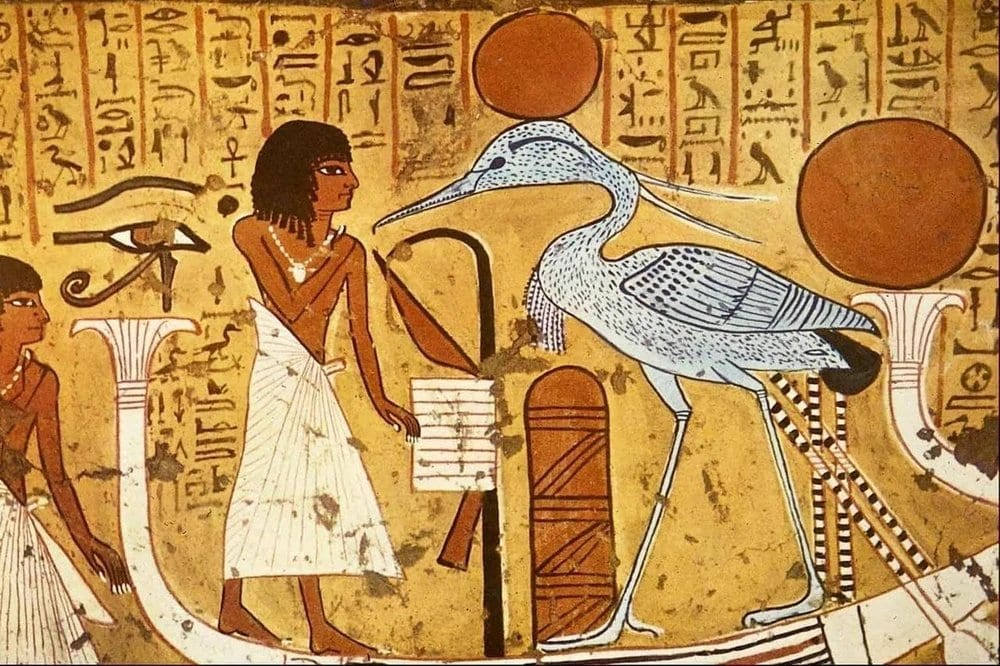“There is also another sacred bird called the Phoenix which I did not myself see except in painting, for in truth he comes to them very rarely, at intervals, as the people of Heliopolis say, of five hundred years; and these say that he regularly comes when his father dies; and if he be like the painting, he is of this size and nature, that is to say, some of his feathers are of gold colour and others red, and in outline and size, he is as nearly as possible like an eagle. This bird they say (but I cannot believe the story) contrives as follows: setting forth from Arabia he conveys his father, they say, to the temple of the Sun (Helios) plastered up in myrrh, and buries him in the temple of the Sun; and he conveys him thus: he forms first an egg of myrrh as large as he is able to carry, and then he makes trial of carrying it, and when he has made trial sufficiently, then he hollows out the egg and places his father within it and plasters over with other myrrh that part of the egg where he hollowed it out to put his father in, and when his father is laid in it, it proves (they say) to be of the same weight as it was; and after he has plastered it up, he conveys the whole to Egypt to the temple of the Sun. Thus they say that this bird does.”



